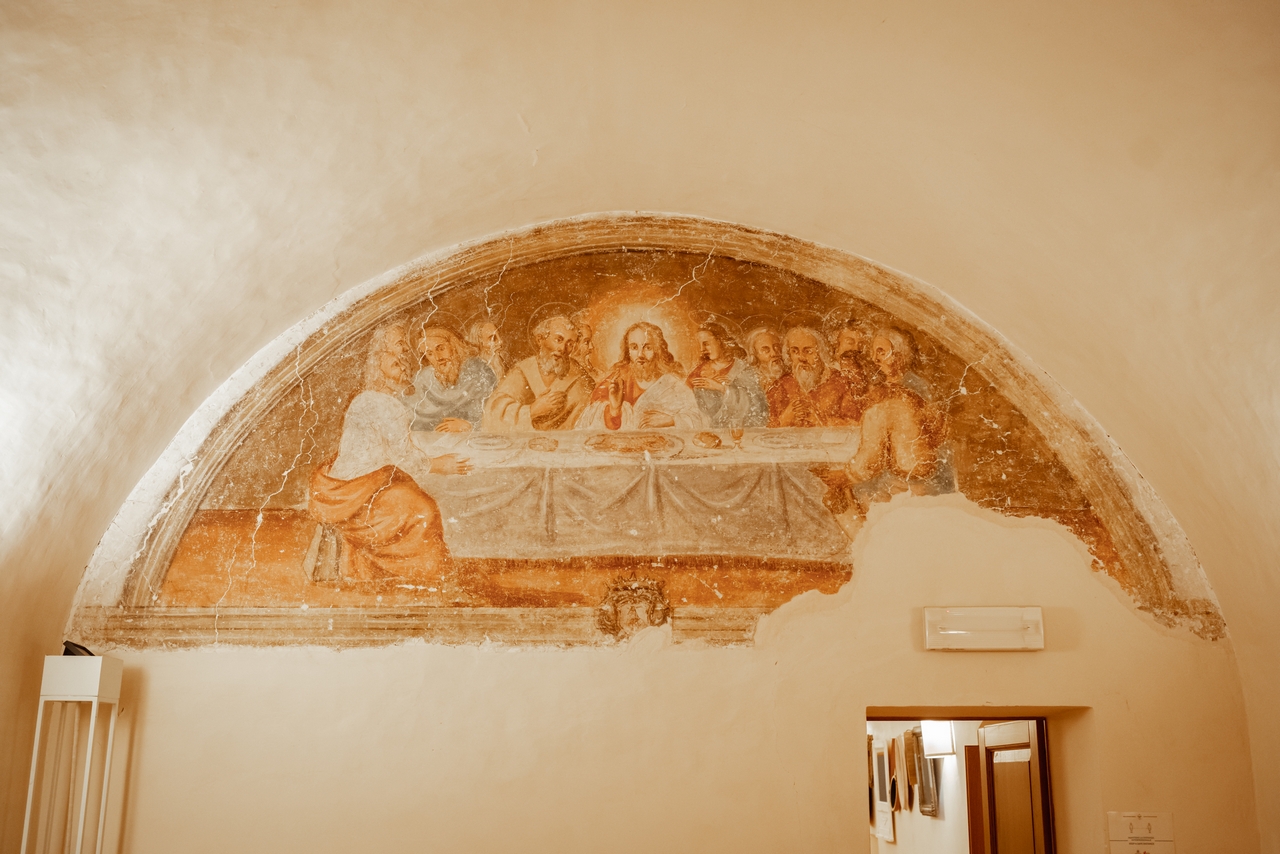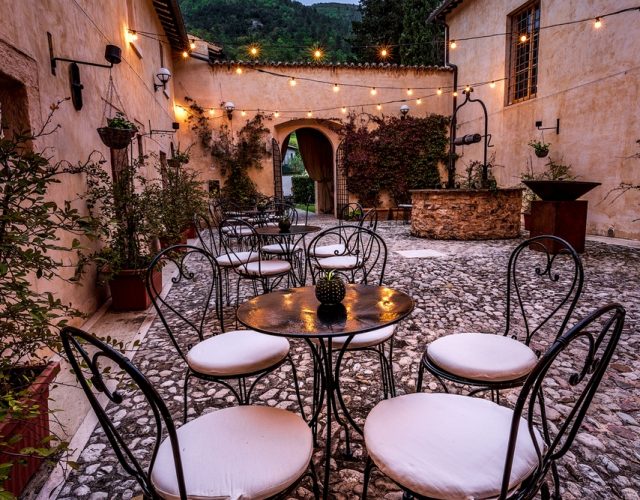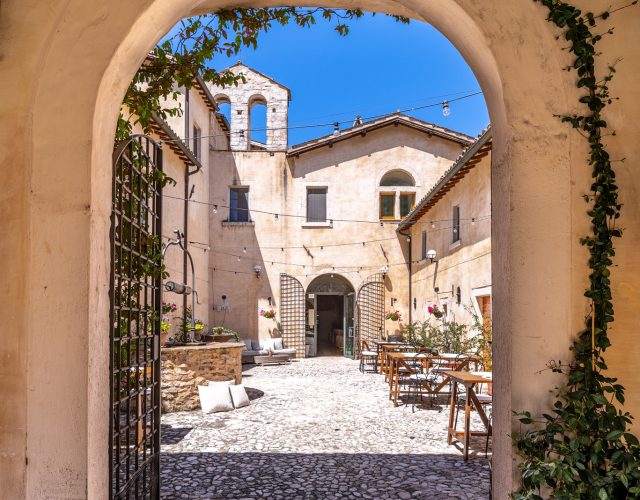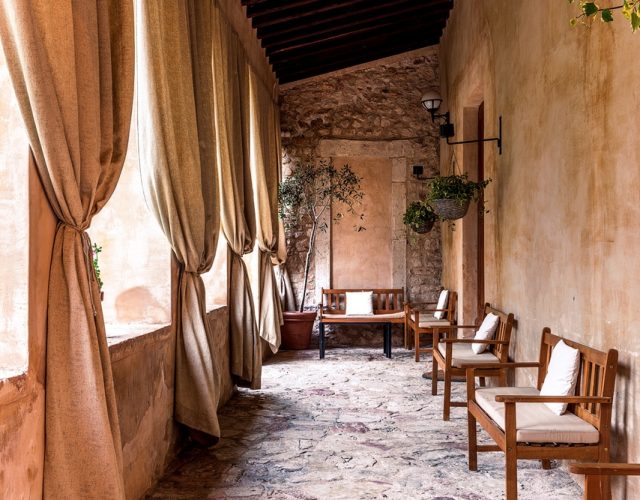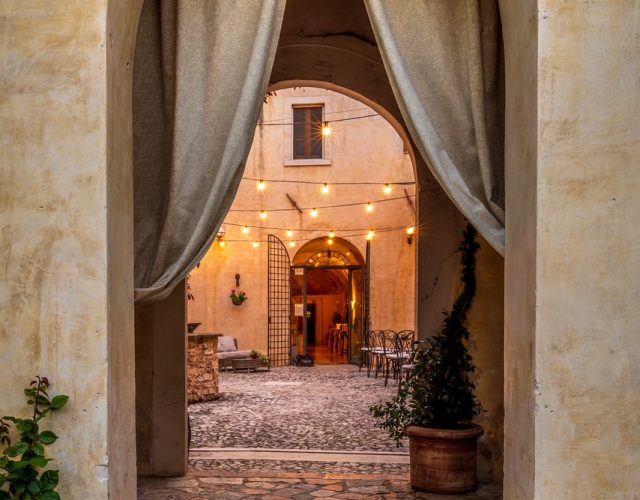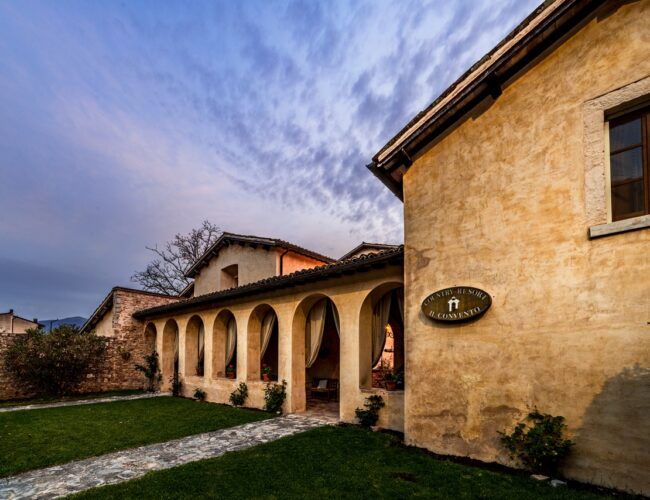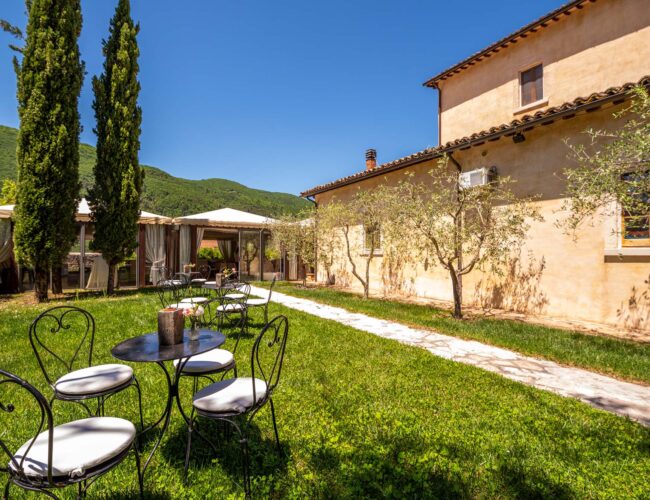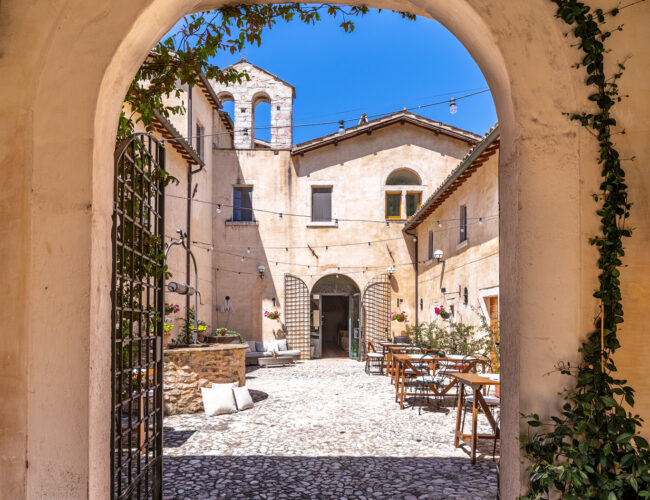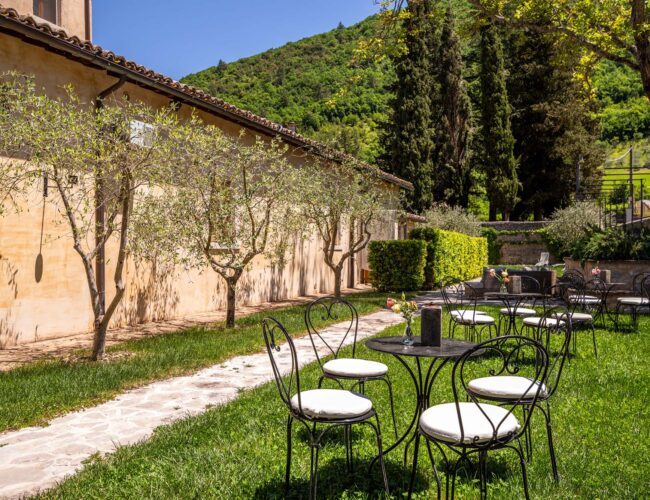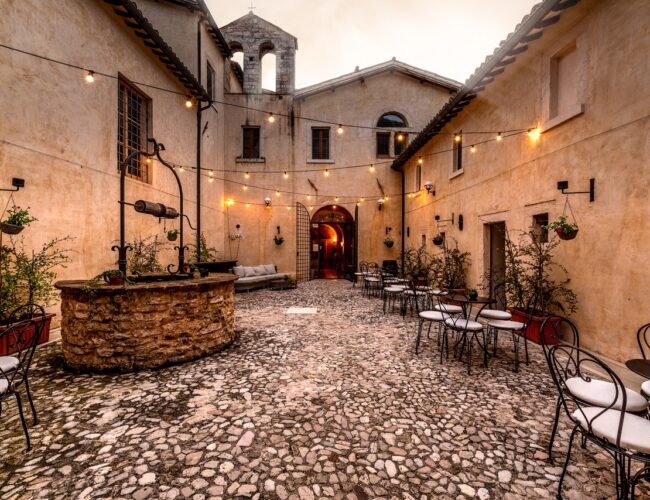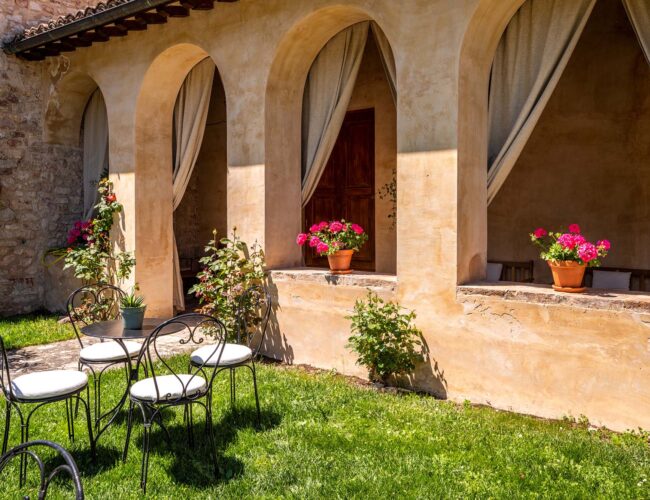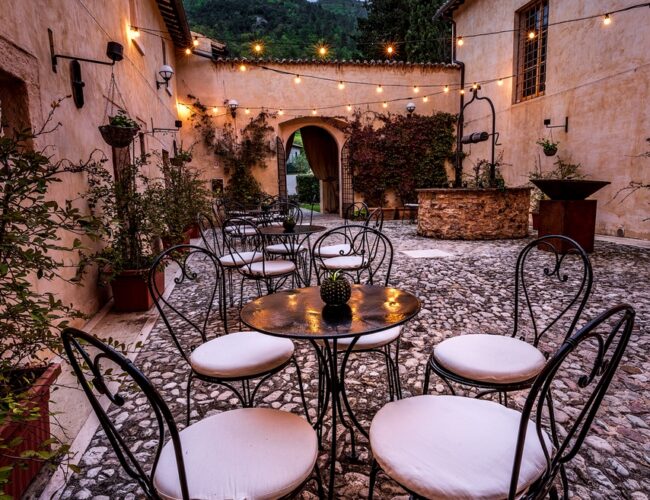Convento Santa Croce Country Resort is located in Sant’Anatolia di Narco, in PIAZZA DEL CONVENTO, 4. It has 12 rooms, a loggia an arcade, an internal courtyard and a big garden with an outdoor Hydromassage pool. There are also other common areas inside the building.
Outside the structure, there is a free and unattended car and motorbike parking lot, where you can leave your vehicle for all the stay.
Our structure allows check-in from 4:00 pm to 8:00 pm and check-out from 8:00 am to 11:00 am. The reception is open from 8:00 am to 12:00 pm and from 4:00 pm to 8:00 pm.
Convento Santa Croce Country Resort does not have an internal restaurant, but offers its guests 2 partner restaurants with a 10% discount on the à la carte menu: the restaurant “Abbazia dei Santi Felice e Mauro” (about 2km away, closed on Mondays) and the Trattoria “Il Palato Felice” (about 100m away, closed on Tuesdays).
The bar service is available from 8:00 am to 12:00 pm and from 4:00 pm to 8:00 pm.
The history of the Convent
he conventual structure of S. Croce was built outside the castle of S. Anatolia, along the Medieval route connecting with Scheggino through the ancient settlement of Pozzano. The construction of the church dates back to the 13th or 14th century, as suggested by some surviving architectural elements: the bell tower, typical of many Romanesque churches in the area, seems to support this dating. The church of S. Croce was annexed to the convent of the Friars Minor Observant, which also housed the Third Franciscan Order. There was also an oratory of S. Antonio with the sodality of the "Mulari".
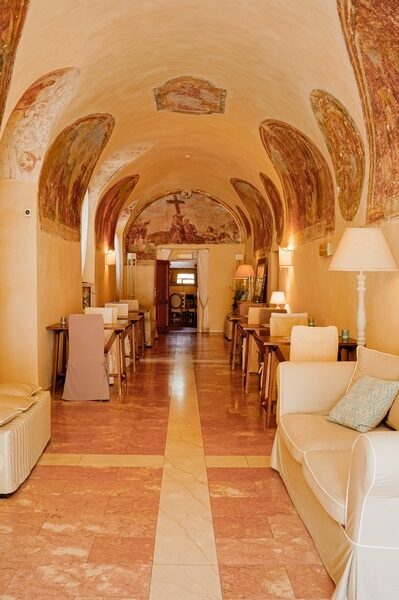
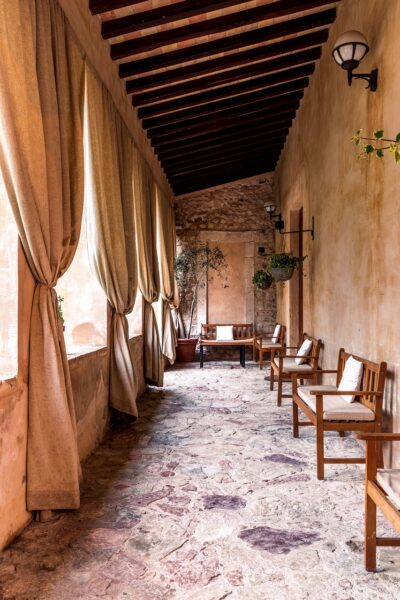
mysterious and enchanted Valnerina
Contact us
Do not hesitate to get in touch with us to get more information. We will get back to you as soon as possible.ccording to the 17th century historian Ludovico Jacobilli, a Blessed Cristina lived here, a Franciscan tertiary, emulating the virtues of the homonymous saint who was martyred in the third century. "B. Cristina of S. Croce - writes Jacobilli - was of great holiness of the Third Order of Saint Francis. He died in Valliferio or Valle Narco di Spoleto on 10 March 1360 "(2). This Blessed is also mentioned in the Arbor Tertii Ordinis: the Irish historian Lukas Wadding recalls the Blessed Christina of S. Croce in his "Annals" (3). The complex interior underwent a radical makeover in the seventeenth century. An ecclesiastical document dated 5 April 1610 (pontificate of Paul V), signed by Giacomo Vaccaroni, canon and Lateran chamberlain, provides interesting information on the church and convent of S. Croce, which arose "in solo et fundo Lateranensi" (4). The Chapter of the Basilica of S. Giovanni in Laterano, adhering to a petition by Cesare Cardini, a native of S. Anatolia di Narco and "Roman procurator", grants with a formal deed the faculty to restore and restore in good condition ("in bonum et decentem statum reducere ") the church of S. Croce di Valdinarco, in order to allow some Franciscan friars to celebrate mass, confess and preach" for the benefit and health of the souls of that place and those around it ".

If you want to visit the city rich in culture, art, typical products and film set locations, you just have to stay overnight at the Boutique Hotel Aurora. 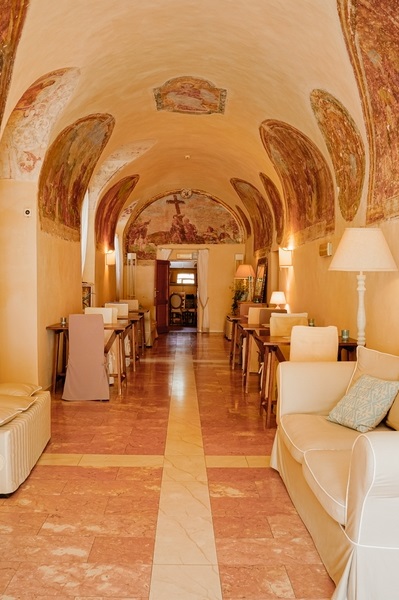

rom these documented assertions it can be inferred that in the early 1600s the church of S. Croce was in a dilapidated condition and in a state of neglect. This document expresses the obligation for Cesare Cardini to provide at his own expense and with the patronage of Alessandro Borgia, bishop of Borgo S. The original of this document is currently kept by Renato Cardini, descendant of 4 Cesare Cardini. Sepulcher, the maintenance and conservation of this religious building. With the Chapter Act of 1610 the Lateran Basilica reserves the "usual jurisdiction" and all property rights on the assets and proceeds of the church of S. Croce, obliged to pay an annual perpetual census (one pound of white wax) . This document also provides for the fifteen-year renewal of this concession by the Lateran Chapter. In 1610 the jurisdictional and census dependence of the church of S. Croce in Valdinarco from the Lateran Basilica was therefore formalized. Finally, the aforementioned document expresses the obligation to affix the Lateran insignia on the outside above the church door and, on the inside, a commemorative plaque of this concession.In 1712 Mons. Giacinto Lascaris, bishop of Spoleto, made a pastoral visit to the church of S. Croce and to the convent community of the Minori Osservanti, still present in S. Anatolia5. There is no documented information on the historical events that led to the consecration of the church of S. Croce and the definitive closure of the annexed Franciscan convent: it is presumable that this took place after 1860 and the end of the Papal States, due to legislation. subversive of the new unitary state and the relative confiscation of many ecclesiastical assets, which have become patrimony of the public domain. The structure of the former convent was subsequently used, until a few decades ago, as the seat of the Carabinieri barracks. In 1979 the room of the former church of S. Croce was restored by the municipal administration of S. Anatolia di Narco and transformed into a conference room: this structure was named, with the provident initiative of the local administrators, to the brothers Campani, originally from Castel S. Felice (currently a hamlet of S. Anatolia di Narco) and who lived in Rome in the 1600s, renowned watchmakers, creators and manufacturers of precision optical instruments.



